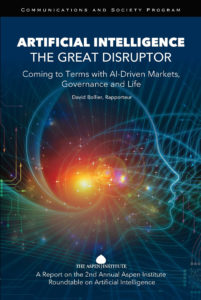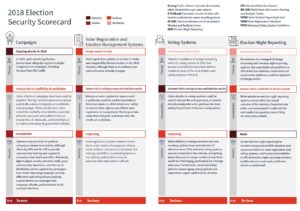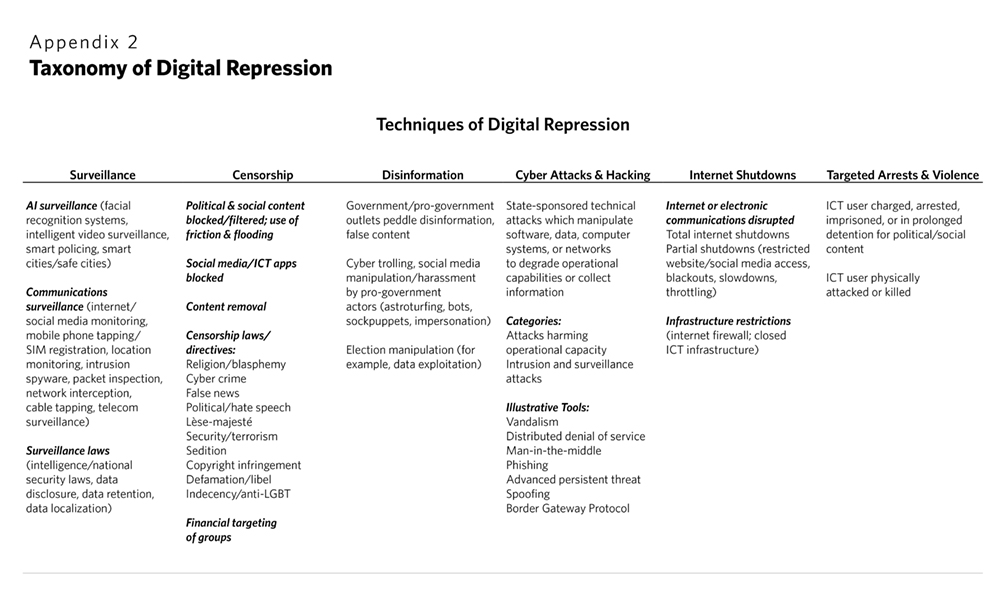Advanced democracies are struggling to balance security interests with civil liberties protections in the deployment of artificial intelligence surveillance technology, according to a new analysis.
Both liberal democracies and autocratic states employ AI surveillance systems. Chinese and U.S. companies are the largest global suppliers of this cutting edge technology. But to what end? asks Steven Feldstein, a nonresident fellow in Carnegie’s Democracy, Conflict, and Governance Program, where he focuses on issues of democracy, technology, human rights, U.S. foreign policy, conflict trends, and Africa.
Unsurprisingly, countries with authoritarian systems and low levels of political rights are investing heavily in AI surveillance techniques. Many governments in the Gulf, East Asia, and South/Central Asia are procuring advanced analytic systems, facial recognition cameras, and sophisticated monitoring capabilities, he writes.

Aspen Institute
But liberal democracies in Europe are also racing ahead to install automated border controls, predictive policing, safe cities, and facial recognition systems. In fact, it is striking how many safe city surveillance case studies posted on Huawei’s website relate to municipalities in Germany, Italy, the Netherlands, and Spain, adds Feldstein.
Carnegie’s new AI Global Surveillance Index (below) explores how different governments deploy and use this technology. The findings indicate that at least seventy-five out of 176 countries globally are actively using AI technologies for surveillance purposes. Three key insights emerge from the AIGS Index’s findings, he notes:
- First, global adoption of AI surveillance is increasing at a rapid pace around the world. Seventy-five countries, representing 43 percent of total countries assessed, are deploying AI-powered surveillance in both lawful and unlawful ways. The pool of countries is heterogeneous—they come from all regions, and their political systems range from closed autocracies to advanced democracies. The “Freedom on the Net 2018” report raised eyebrows when it reported that eighteen out of sixty-five assessed countries were using AI surveillance technology from Chinese companies….
- Second, China is a major supplier of AI surveillance. Technology linked to Chinese companies are found in at least sixty-three countries worldwide. Huawei alone is responsible for providing AI surveillance technology to at least fifty countries. There is also considerable overlap between China’s Belt and Road Initiative and AI surveillance—thirty-six out of eighty-six BRI countries also contain significant AI surveillance technology. …..
- Third, liberal democracies are major users of AI surveillance. The index shows that 51 percent of advanced democracies deploy AI surveillance systems. In contrast, 37 percent of closed autocratic states, 41 percent of electoral autocratic/competitive autocratic states, and 41 percent of electoral democracies/illiberal democracies deploy AI surveillance technology. Liberal democratic governments are aggressively using AI tools to police borders, apprehend potential criminals, monitor citizens for bad behavior, and pull out suspected terrorists from crowds….RSVP
 The U.S. State and Treasury Departments should create a technology alliance to develop common policies for the use and control of emerging technologies, says a Council on Foreign Relations Task Force. Membership would be made up of countries with shared concerns about the effects of frontier technologies on international stability and democracies, as well as those with significant technological capabilities. These include the members of the Five Eyes intelligence-sharing alliance (the United States, Australia, Canada, New Zealand, and the United Kingdom), Estonia, Germany, India, Israel, and Japan, according to Innovation and National Security: Keeping Our Edge by CFR’s James Manyika, William H. McRaven and Adam Segal:
The U.S. State and Treasury Departments should create a technology alliance to develop common policies for the use and control of emerging technologies, says a Council on Foreign Relations Task Force. Membership would be made up of countries with shared concerns about the effects of frontier technologies on international stability and democracies, as well as those with significant technological capabilities. These include the members of the Five Eyes intelligence-sharing alliance (the United States, Australia, Canada, New Zealand, and the United Kingdom), Estonia, Germany, India, Israel, and Japan, according to Innovation and National Security: Keeping Our Edge by CFR’s James Manyika, William H. McRaven and Adam Segal:
At least in the first stage, membership would be limited to ten to fifteen countries to facilitate coordination of positions and development of concrete actions. The group would work to develop norms of state behavior in cyberspace and for AI governance. At issue is not only
who will develop and deploy new technologies first, but also the values embedded within these new technologies and whether they will be used to reinforce or undermine democratic societies.
 Democracies are better able to adapt to tech-driven epochal change, argues Alexander Görlach, a senior research associate at the Institute on Religion and International Studies at the University of Cambridge. Democratic institutions have the capability to adapt to this change — and they must, he writes for DW. But such moments are deadly for autocracies because in the long run the old forces cannot keep down the next generation, he adds.
Democracies are better able to adapt to tech-driven epochal change, argues Alexander Görlach, a senior research associate at the Institute on Religion and International Studies at the University of Cambridge. Democratic institutions have the capability to adapt to this change — and they must, he writes for DW. But such moments are deadly for autocracies because in the long run the old forces cannot keep down the next generation, he adds.
The CSIS Humanitarian Agenda is hosting the first annual Washington Humanitarian Forum on September 19th, 2019. This full-day conference will focus on humanitarian challenges that sit at the intersection of United States national security and foreign policy priorities. This year’s theme is Unlocking Humanitarian Access – Opportunities for U.S. Leadership.
The Humanitarian Implications of Cyber Conflict will be addressed by:
- Colonel Gary Corn, Director and Adjunct Professor, Washington College of Law, American University
 Shanthi Kalathil, Senior Director, International Forum for Democratic Studies, National Endowment for Democracy
Shanthi Kalathil, Senior Director, International Forum for Democratic Studies, National Endowment for Democracy- Moderator: James Andrew Lewis, Senior Vice President and Director, Technology Policy Program, CSIS. RSVP
Russia and China Are Trying to Set the U.N.’s Rules on Cybercrime, Allison Peters
writes for Foreign Policy. At the United Nations General Assembly, democracies must push back against their agenda, she argues.
Information and communication technologies are increasingly prevalent in electoral management and democratic processes, even for countries without any form of electronic voting, notes International IDEA. These technologies offer numerous new opportunities, but also new threats. Cybersecurity is currently one of the greatest electoral challenges, it notes in a new report (above), Cybersecurity in Elections: Models of Interagency Collaboration.









